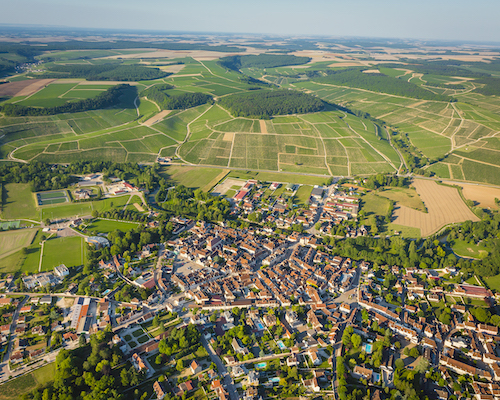Though its name might make it sound like a minor concern, the Petit Chablis appellation holds a place of its own in the Chablis region, with a unique and easy-going personality.


With wine regions like Bourgogne, where demand is high and supply limited, going a little off the beaten path can be quite rewarding, when you’re looking for delicious and accessible wines. In the world of Chablis, the seductive and often surprising wines of Petit Chablis certainly fit the bill, and provide a lot of satisfaction at reasonable prices.

While the word “petit” might make them sound less serious than other Chablis, Petit Chablis wines actually are on the same level of appellation as “regular” Chablis. Both Petit Chablis and Chablis are village-level appellations, a step above regional Bourgogne appellations. Petit Chablis represents 19% of all wine produced in Chablis – more than all the Chablis Premier Cru and Chablis Grand Cru put together (15% of regional production). So they’re not that little, in terms of volume and in terms of their profile.
A different place…
What makes them different? Well, as the expression goes: location, location, location. When the Petit Chablis appellation was created, in 1944, it opened up new areas for planting Chardonnay in the Chablis region. Petit Chablis vineyards are generally found on plateaus and on higher sections of hillside slopes, which often mean slightly cooler growing temperatures.


Those locations also show a different type of geology. While most Chablis vineyards are planted in a type of limestone called Kimmeridgian, with a chalky character and white color, the Petit Chablis vines are found on another type of limestone called Portlandian, which is more recent and shows a browner color. And while the Kimmeridgian soils typically deliver nervy, mineral and vivacious wines, Portlandian soils are a little more relaxed, with the wines showing a slightly rounder and fruitier profile.
…and a different taste
This allows the Petit Chablis wines to be accessible and generous from the get-go, while a good portion of other Chablis wines can require a few years to fully express themselves. It also means that pairings can be approached a little differently. While oysters, that classic Chablis pairing, are still a go, the fruitier and fuller side of Petit Chablis means a great match for salmon with mushrooms and Chinese or Japanese spicing, or shrimp with a mango or pineapple salsa. It can also be great for sipping on its own on the patio, or go along with some dry-cured ham and some cheese.
There’s also a lot of fun to be had comparing different producers and vintages, as individual cuvées show their own specific character. In recent years, 2018 yielded some exceptionally generous and ripe wines, while the dry and sunny finish of the 2019 vintage created concentrated and structured wines with remarkable balance. So Petit Chablis can be quite fun to explore, not only for its distinctive personality, but also thanks to its diversity and, in Bourgogne terms, its affordability.
